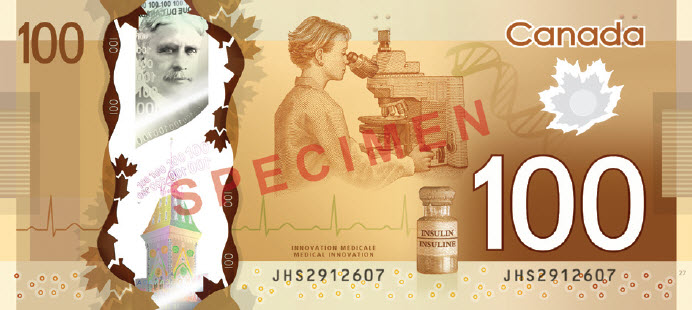Canada converting currency from paper to plastic
November 22, 2011

Polymer bill (credit: Bank of Canada)
Canada has just started issuing $100 denomination notes on a polypropylene substrate, and plans to make all of its paper currency plastic within the next two years.
Besides foiling counterfeiters, there are also cost and environmental advantages. The notes are expected to last at least 2.5 times longer, on average, than their paper equivalents. And since fewer replacement notes will be needed over the life of the series, the Polymer series would reduce the environmental impact of the manufacturing process and of transporting new notes to financial institutions and worn notes back to the Bank.
The notes in the Polymer series are the first to have a stripe of holographic foil. The images on the foil, which is placed in a large vertical window, are large, brilliant and complex, and the details and colors can be seen clearly from both sides of the note. A second, smaller window contains a frosted area that, when viewed against a single-point light source, shows a circle of numbers matching the note’s value.
Traditional security features, such as fine-line printing (which produces even sharper images on polymer than on paper) and the intaglio process for printing raised ink, give the new notes a unique look and feel. The new notes also carry innovative features designed to be “seen” only by note-handling equipment to ensure that these machines can authenticate the notes.
The Polymer series also retains the features contained in the current Canadian Journey series to help the blind and partially sighted to identify notes: large numerals against contrasting backgrounds, dominant color schemes, codes that can be read by an electronic reader supplied to the blind, and a system of raised dots in a different pattern for each denomination.